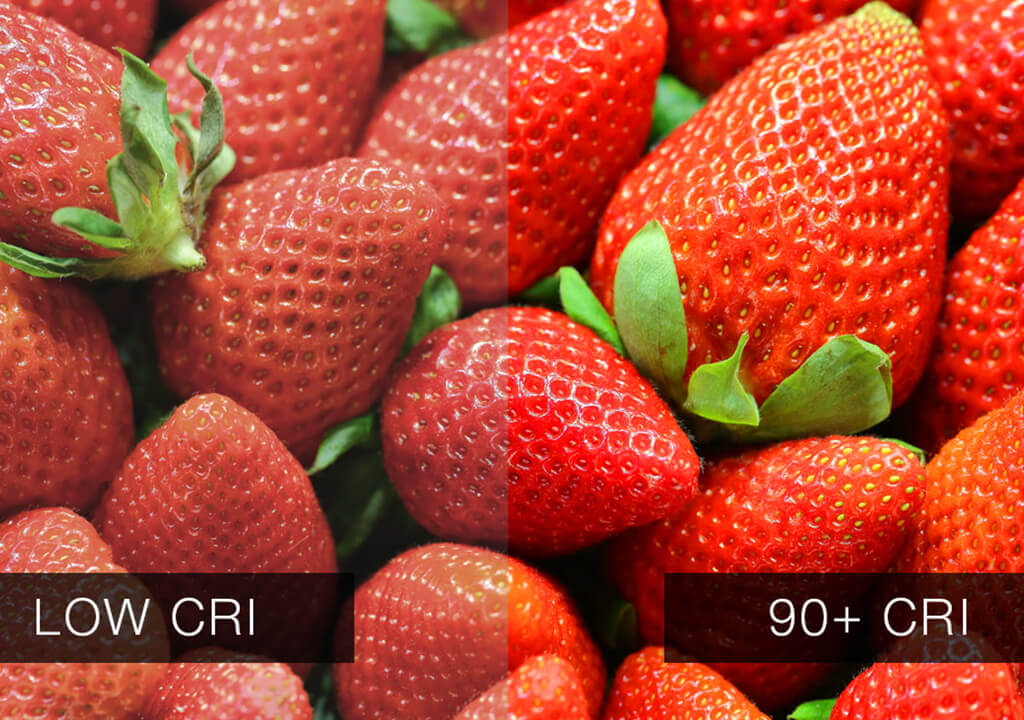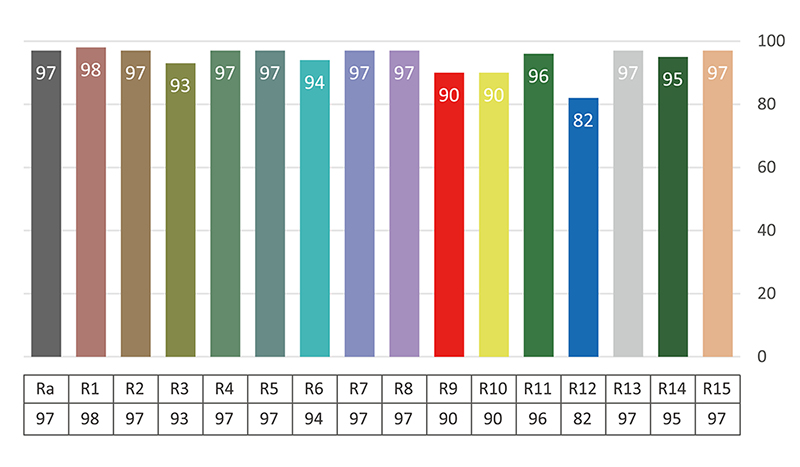What is CRI? (Color Rendering Index)
15 Standard Colors in the CRI Measurement Scale:
- TCS01 (R1): Light greyish blue color used to assess the accuracy of bluish tones.
- TCS02 (R2): Dark red color representing warm reddish tones.
- TCS03 (R3): Yellowish green color used to evaluate the accuracy of greenish tones.
- TCS04 (R4): Medium green color representing pure green tones.
- TCS05 (R5): Turquoise color used to assess bluish green tones.
- TCS06 (R6): Light blue color representing sky blue tones.
- TCS07 (R7): Violet-red color used to evaluate the accuracy of reddish violet tones.
- TCS08 (R8): Medium red color used to assess pure red tones.
Additional colors (R9 to R15) for more comprehensive evaluation:
- TCS09 (R9): Deep red color often used in medical and food industries where accurate reproduction of red tones is critical.
- TCS10 (R10): Saturated yellow color representing intense yellow tones.
- TCS11 (R11): Saturated greenish-blue color used to assess the accuracy of bluish green tones.
- TCS12 (R12): Saturated green color representing intense green tones.
- TCS13 (R13): Saturated blue color used to assess deep blue tones.
- TCS14 (R14): Saturated violet color representing intense violet tones.
- TCS15 (R15): Flesh color used to assess the accuracy of skin tones, important in medical and cosmetic industries.
Summary
CRI is an important and widely used metric that helps assess the ability of light sources to reproduce colors naturally and accurately. Understanding and applying it can help make better lighting choices in homes, workplaces, and professional environments where color fidelity is crucial.
If you want to perform CRI measurement in your office or workspace, contact us and we will take care of it.
How to choose the right CRI lighting? - How does CRI affect our lives and which CRI value is best suited for specific environments, such as homes, offices, stores, and art galleries? Come to us for a consultation!

